The purpose of this article is to produce a simple version of the neo-platonic structure behind the Chaldean Oracles so that they can be understood by modern magicians. I am trying to avoid making it too complex. One of the reasons that the Oracles have been set aside by many is because they been picked apart by academic philosophers rather than those who might have use for it. Hopefully this short article will explain the Oracles enough for a reader to piece together more of them for themselves.
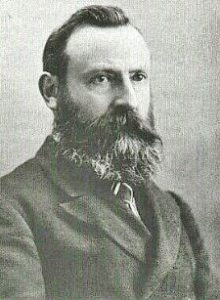 The Chaldean Oracles are important in the Golden Dawn, making an appearance in two of the grade rituals. But other than Wynn Westcott, who wrote a rather important translation, they were ignored. In fact, cynics suggest that Samuel Mathers might have just inserted them into the rituals for theatrical effect. It is rather a pity, because its central philosophy appears closest to modern occultism (and indeed the Corpus Hermetica). Specifically it is saying that we are divine sparks who are existing in matter and the way to return is go back the way we came – by ascending. An example of this can be found in the Mithras Liturgy
The Chaldean Oracles are important in the Golden Dawn, making an appearance in two of the grade rituals. But other than Wynn Westcott, who wrote a rather important translation, they were ignored. In fact, cynics suggest that Samuel Mathers might have just inserted them into the rituals for theatrical effect. It is rather a pity, because its central philosophy appears closest to modern occultism (and indeed the Corpus Hermetica). Specifically it is saying that we are divine sparks who are existing in matter and the way to return is go back the way we came – by ascending. An example of this can be found in the Mithras Liturgy
Who wrote the Chaldean Oracles?
The Chaldean Oracles were a second century magical texts which we only have in fragments. They were believed to have been written by Julian the Theurgist who served in the Roman army during the philosopher Caesar Marcus Aurelius’ campaign against the Germans. He was attributed with various magical miracles. The Oracles themselves were a Greek commentary on a mystery-poem which was supposed to have originated in Babylonia. They are a mix of Neoplatonic elements and ideas and since we don’t have the original we must take the fragments where they were quoted and put them into an order. The most scholarly attempt at organising the oracles was carried out by
Wilhelm Kroll (who was from the town of Frankenstein in Germany) published an edition arranging all known fragments in order of subject. While this was not a reconstruction, it was the scholarly thing to do. Westcott had another bash at it.
The Chaldean Oracle’s universe
The Chaldean Oracles create a three-level universe which map to the spirit, soul and body of man. These levels are God which is a “trinity” like the three spheres on the top of the cabbalistic sphere of life. The next level is that of a world of formation which exists to bring the Gods’ ideas into being. The last level is matter or the plane of results.
Normally these words were drawn as three concentric circles. The first is the heavenly one of fire which was ruled by the spiritual sun. The Second was the sphere of the fixed stars and planets ruled by Helios and the third was ruled by the Moon and all that is underneath it.
This includes the sub-lunar realms and the underworld. The underworld is a lot darker and withdrawn from the sublunary world, and depending on whether you think life exists in and “underworld” this could be a fourth division. In fact, what Westcott translated as the “darkly splendid void” in the oracles was ruled by Hades as the opposite of the Heavenly world making it separate from the realm of Hekate.
These realms actually overlap each other with the higher levels taking place within the other shells.
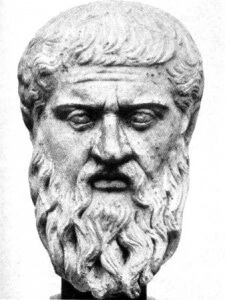 Plato and the Chaldean Oracles
Plato and the Chaldean Oracles
The Chaldean Oracles are based on a system of thought called Middle Platonism. This is a term which is given to those who followed Plato’s philosophy but had added a few ideas to it. Plato believed that God created the universe using archetypal ideas. These ideas are like seeds. If God wanted to create tables, he would have the idea of a table and it would flow down into creation and every table in the universe would be developed from this idea. Plato considered that God was perfect and Good.
The Middle Platonic period was during a difficult period of history where it was felt there was a need to explain why terrible things happened. Plutarch (45-120) felt that while god was pure and perfect, matter had been corrupted by evil which had been transformed into the world soul. To make this work the perfect God, had to be removed from matter but be allowed to comes to human aid by direct revelations (or through magic). He felt that the pagan gods were different aspects of this One Divine Being which worked through daemons.
The Chaldean Oracles 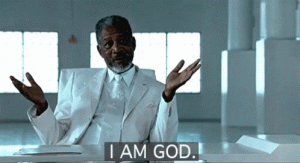
Like Plutarch, the Oracles start with a One Pure God which is called the Nous. This can be translated as Mind, but also awareness. This is important. If you have One
God and everything is created within it, then awareness defines it as being a God. My body might be made up of a nearly infinite number of atoms but I am unaware of any of them. The Oracle’s One Thing is aware of itself.
But the Oracles describe the One Thing or Over Mind as being separate from its creation. Unfortunately, it is not clear from the fragments how this possible. It might be that once it had created the television, it withdrew its conscious so that it could sit back and watch. It allowed a mirror version of itself was doing all the work within the television script, presumably with the One Thing played by Morgan Freeman .
The Chaldean Oracle’s Second Mind
This “second mind”, or God within the Chaldean Oracles’ script was more of a character and it had flaws. Perhaps these flaws were something that the First Mind wanted to sort out and maybe it was not as perfect as the Middle Platonists wanted. Either way there were some shadow written into the script for Morgan Freeman to play out.
This form of God was a creator. It would take Plato’s “ideas” and fling them about like lightning bolts until everything was created. In the solar system, he would be the Sun. In the Greek Pantheon, it would be Zeus.
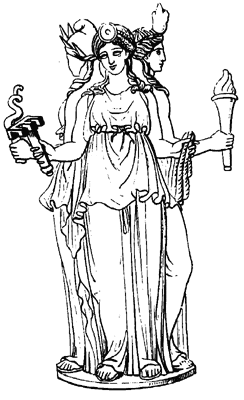 Hekate in the Chaldean Oracles
Hekate in the Chaldean Oracles
But another divine character would need to be invented to act as a transformer to those divine ideas. This being was female and in the Oracles, is identified with Hekate, but could equally be Hera as the wife of Zeus.
Hekate takes the divine ideas and gives birth to them in matter. Matter is darker and heavier but it is also another level from the purer clearer ideas of the Second Mind. There are a huge number of forms which can be built from one Idea. Practically then the Goddess is doing the lion’s share of the work, at least on the level of matter.
We will see later that she also has another function. She rules the moon, and therefore everything that takes place below it. It is important that when we talk about planets we do not take this literally. These actions are not just taking place within our solar system but throughout the entire Universe.
Chaldean Oracle’s Daemons and other “lesser beings”
Like monotheistic religions it is assumed that the big three do not do all the donkey work themselves. They are assisted by a chain of lesser beings. These are the Iynges, the Connectors, The Teletrarchs and Messengers and Daemons. These are the workers in creation. The First level of beings are the Iynges and the Connectors.
Iynges are wheel shaped entities which are the powers behind the magic names that allow the magician to communicate with the big three. Each Iynge is the embodiment of that magical name which can be used to take control of an aspect of creation. In rituals these names were placed on a disk which as spun or turned to attract the Iynge to allow communication to take place. But this was physical act which symbolises the reality behind the fact that since the universe was created by words, a Iynge can be used to change some of the framework. Iynges have been completely forgotten by modern magic, but are the reason that repeated (circular) chanting is effective. They are a similar concept to the Egyptian Heka.
Connectors (synoches): are Ideas which hold together the universe. They have a protector function because they work together to create stability. Like their name suggests they unite different ideas. There is a link between the connectors and the rays of the sun. The Oracle uses the connectors to assist the soul as it embarks as they ascend on the path of return. They are the knots which hold together the net of creation. They are more abstract
The Chaldean Oracle’s second order of beings
Masters of Initiation (Teletarchs): For the magician, the Masters of Initiation are cosmic entities which uphold the universe, have a similar function to the Archons. While the archons rule over planetary spheres the Masters of Initiation rule over the three levels of creation and represent virtues flowing through creation. Faith is assigned to the Material Master of Initiation, Truth to the Ethereal Masters of Initiation and Love with the Heavenly Masters of Initiation. As their name suggests they initiate the magician to each sphere as they go up the ladder and do so by purification. The magician is expected to show some of their virtues to obtain an initiation in each sphere. The Masters of Initiation were gods. The heavenly one was the God Aion; the Ethereal was Helios or the Sun and the Material was Hekate/Selene or the Moon. Unlike the Archons, the Masters of Initiation were friendly and helpful to the magician.
The Chaldean Oracle’s Third Level of Beings
Messenger Daemons and Demons: Messengers (angels) and Daemons are pretty much what we expect them to be as this seems to have been added into unorthodox Christian thought. Good Daemons were like angels and had a similar function, unlike other ancient systems though evil daemons were very demonic and they existed only in the sub-lunar world. The Oracles have several flavours of evil demons which only exist in the sub-lunar world. They are the beings which are responsible for bringing evil into humanity and sickness. These demons are entirely elemental.
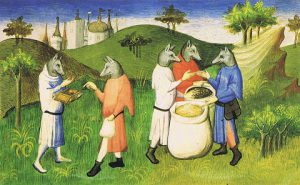 There are earth, water, air, and lunar demons. There were no fire demons as this element was considered too holy, but the role was taken by the moon which was the “fire” of the sub-lunar realm. Demons were dog-faced, because the moon was ruled by Hekate therefore they were hers.
There are earth, water, air, and lunar demons. There were no fire demons as this element was considered too holy, but the role was taken by the moon which was the “fire” of the sub-lunar realm. Demons were dog-faced, because the moon was ruled by Hekate therefore they were hers.
These dogs had to be driven off if the magician was going to ascend as they represented the material aspects which held the person down.
Paganism and the Chaldean Oracles
Reading the Oracles, you are struck by a lack of pagan gods. In fact, were it not for various heresies you could easy apply all this to a Christian or Jewish religion. Pagan gods are named in the Oracles, but their names are not considered as important as what they do. It is a philosophy and as such could be applied to most religions. A trinity of Over Mind, Zeus and Hekate might not work like they do in the myths. Zeus did not create the world in Hesiod’s Theogony but paganism is not as dogmatic as more modern religion. Middle Platonism is telling us that the Gods are aspects of these three and some of these concepts can be seen to exist within Hesiod and Homer, even if it is through a more abstract reading.
Further Reading on the Chaldean Oracles
The Chaldean Oracles, by Roth Majercik
Hetake Sotara by Sarah Iles Johnston
The Chaldean Oracles of Zoroaster by Wynn Westcott

Comments are closed